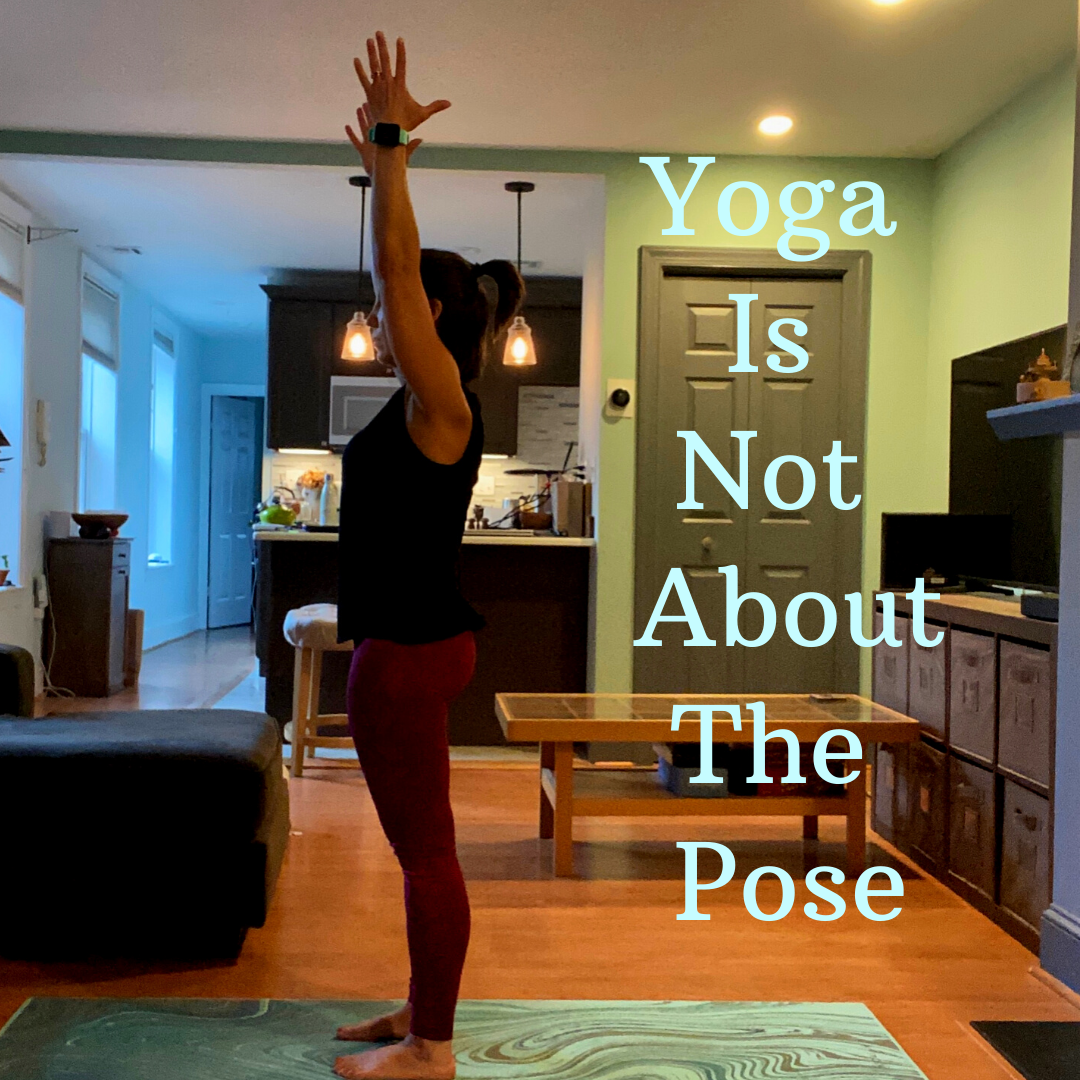Yoga Is Not About the Pose
/This past month or so, I’ve been pausing in posting on social media and this blog to do some of my own internal work, yoga study, and adjustments. One of the aspects that I’ve been contemplating and working on is the idea of what yoga is, and how yoga (like so much in the wellness industry here in the US) has gotten away from its roots. In some ways, this diversion is obvious - cultural appropriation in the form of T-shirts with sayings like “Namastay In Bed” and massively edited Instagram photos of impossible-looking poses on the beach in bikinis, just to name a couple of examples. Yoga, at its roots, in no way requires you to be model thin and tall wearing expensive name brand attire, but you’d never know that from looking at the advertisements for many studio promotions or brands that cater to the industry. There’s the fact that yoga these days is generally expensive, which makes it exclusive (I’m not saying we shouldn’t pay teachers, we should! But there are ways in which you can afford to pay teachers and have more affordable and inclusive options). In other ways, the distancing from the roots is less obvious to those that haven’t studied yoga - the shift towards the physical postures being thought of as “what yoga is”, instead of them being one of the many pieces of yoga. Yoga these days is seen as a thing that you do in a place on a mat, instead of a way of being.
Before I continue, I want to be clear here about a few things:
1.) I’m not saying that the physical practice isn’t important. Asana, or physical postures, is one of the Eight Limbs of Yoga, which I’ll discuss further in another post. But the fact that it’s one of eight means it’s one eighth of the total practice of yoga and yet it’s often looked at as all of yoga.
2.) I’m by no means putting the blame for this divergence on students who enjoy coming to the classes because they enjoy the physical practice. There are plenty of things that I enjoy doing, that I might go take a class or do an online class for, and I don’t spend time in deep study of the roots of the practice before doing so. I hear about it, I try it, and if it’s a practice I do with a teacher, I assume that the teacher will share these important pieces - the roots, the culture, the history, etc with me. Sure, if I get a taste of this information, I might look into it more. But as a teacher I by no means expect my students to spend their weekends reading ancient texts in order to take a yoga class, and if any part of yoga helps you in any way, than I’m glad that it’s doing so.
3.) I do understand that things evolve over time, and I don’t expect that our yoga practice in 21st century America will be exactly as it was practiced in India several thousand years ago.
With that said, we’ve gotten far from the roots of yoga, even taking into account the evolution of time, location (it’s practice across the globe now), innovation (i.e. we’re all teaching online these days with COVID), and the like. And as a teacher, I feel it’s my responsibility to do more to get back to these roots, to share these with my students, to realize that I don’t know what I don’t know, and to do what I can to resolve that through study and through listening to those who do have a deeper connection to and understanding of what yoga truly is. As a teacher, it is my job to first and foremost always be a student. And so I’m working on doing that, both personally, and in the ways in which I teach and share with my class. It will be a process, and I am sure there are times where l’ll interpret something incorrectly or not have a detail perfectly accurate or mispronounce something, or simply still not know what I don’t know. That’s all part of the learning, the growth, and being human, and it’s ok.
Since completing my yoga teacher training, I’ve known I wanted to use yoga to help people, both on and off the mat. I’ve known that I’ve wanted to create opportunities that make yoga available to as many people as possible, regardless of income level or fancy yoga pants level or experience level. As I’ve let everything I learned in yoga teacher training percolate in my brain, I’ve become increasingly interested in learning more of the history, the philosophy, the other seven limbs of yoga, in yoga being as much of a practice (probably more) off the mat as on.
Don’t get me wrong, I still love Asana (physical poses) and believe they’re an important part of yoga as a whole. They’re one of the ways in which we practice yoga, and a way in which we can share the practice together, collectively (even if virtually for now). They’re also a way in which many people feel comfortable entering into the practice of yoga, and to me, that’s incredibly value - they serve as a doorway in, and we can grow our practice from there into the other limbs, into yoga as being instead of just doing. I’ll continue to share individual poses and flows and tips and occasional videos on social media and here on my blog. But I’m adding on to that physical practice, exploring it in a new way through the history and philosophy and other limbs. I’m excited to continue learning, to begin weaving this more into my life, my practice, and my teaching. I’d love for you to join me.

